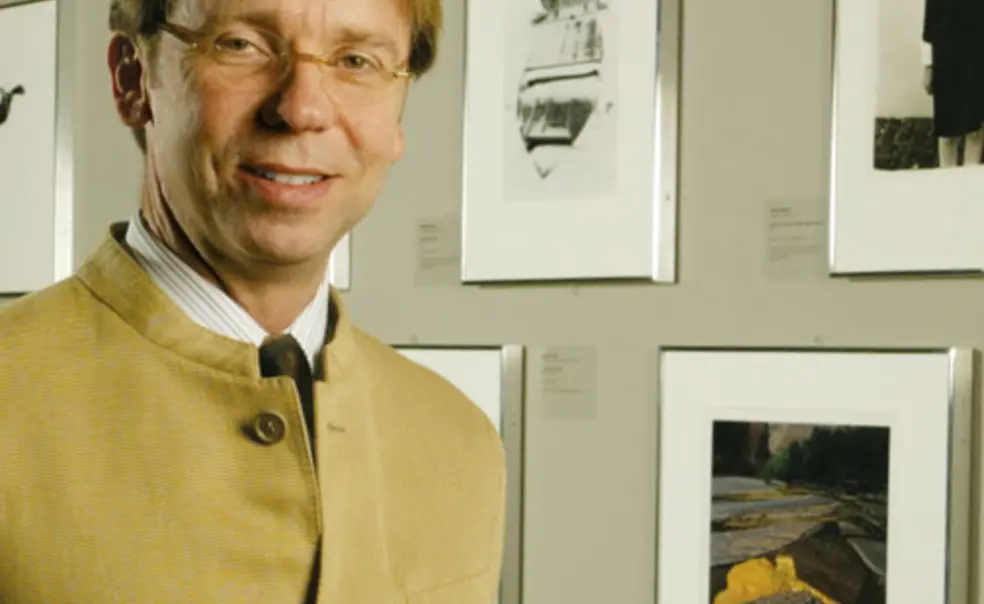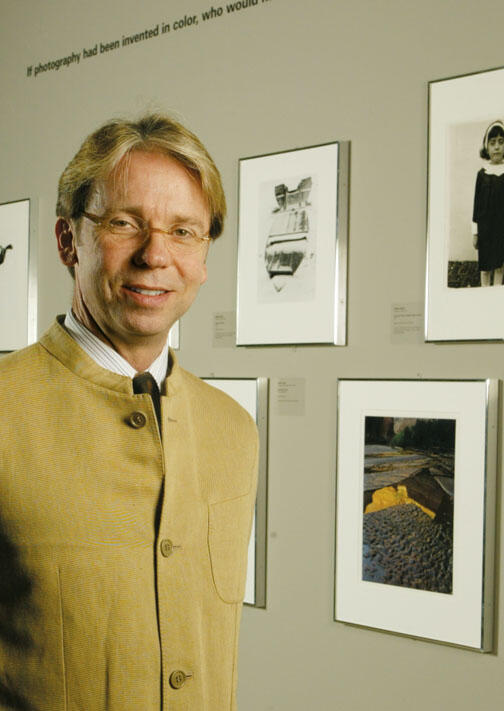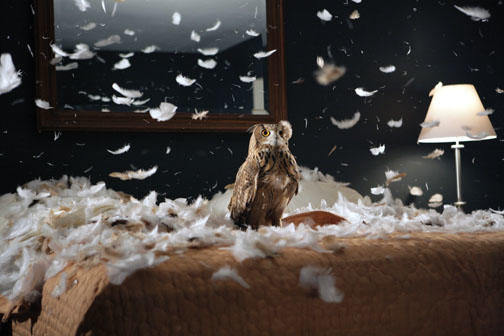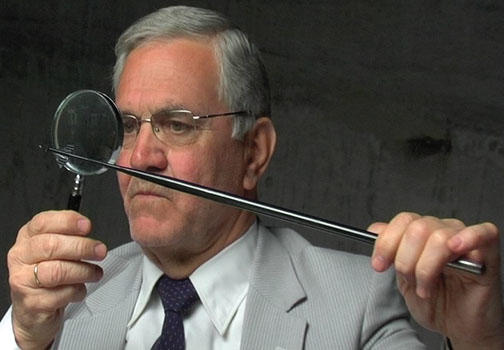Art museum builds a wider audience
New director puts an emphasis on outreach, rethinks expansion plans
When students returned to campus in September they got to experience the Princeton University Art Museum in a new way — outside, under the night sky.
The museum mounted its first outdoor video installation, Migration (Empire) by Los Angeles-based artist Doug Aitken, on the front lawn. The 24-minute allegorical film, which pairs footage of industrial landscapes with surreal scenes featuring migratory animals confined in seedy motel rooms and other unnatural spaces, is projected on a custom-designed screen and will run in a continuous loop from dusk to 11 p.m. every night through Nov. 14.
The exhibition is one example of museum director James Steward’s efforts to enliven the University’s art collection and provide easy entry points to lure more students and members of the local community into the museum.
Steward, who arrived at Princeton in April 2009 from the University of Michigan’s art museum, has made outreach a major focus, particularly to students who otherwise might feel indifferent to an art museum. “I joke sometimes about the fact that many people come to museums with scars — because maybe you were subjected to a really bad field trip as a kid, and you come in thinking museums are boring or museums aren’t for me; they’re for other people,” he said.
Last year Steward initiated a number of strategies to draw more visitors — including keeping the museum open every Thursday until 10 p.m. to host evening events featuring music, food, gallery tours, and talks. At the debut event in September 2009, 2,400 people listened to Princeton a cappella groups, sampled food from 20 local restaurants, and roamed the galleries. A student advisory board formed last year; supervised by Elizabeth Leimone ’09, the museum’s student outreach coordinator, it has helped come up with ideas for events such as “Failed Love,” a Valentine’s Day-inspired program that highlighted items in the collection that were inspired by romance.
“You can’t create a conversion experience if you can’t get them in the door,” said Steward.
After some 20 years of not mounting special exhibits in the summer, the museum this year offered several shows and continued to host Thursday-night events through the hot months, including an outdoor film series of movies made in the 1970s (Chinatown, Jaws, and Shampoo) to complement one of the summer’s indoor exhibitions, “Starburst: Color Photography in America 1970–1980.”
The museum also has energized its marketing campaign by posting banners on campus and on Nassau Street, starting a Facebook page and Twitter feed, and relaunching the museum’s magazine, Princeton University Art Museum. The efforts are paying off: Attendance for the year ending in June was up 44 percent over the previous year, said Steward, growing to about 135,000 visitors.
Once visitors are inside the museum, Steward wants to make the experience more inviting. To that end, galleries are undergoing facelifts one by one over a five-year period. In February the Medieval, Byzantine, and Islamic Art gallery was reopened, and in September the 19th-century and early 20th-century European and American art galleries are scheduled to reopen with a new selection of objects and new user-friendly information cards and labels that Steward hopes will help visitors understand the artists, the objects, and their significance.
Steward eventually would like to incorporate higher-tech (and more expensive) interpretive tools, such as downloadable information with audio components that would be accessible with a handheld digital device.
Budget limitations have postponed plans for a museum storage facility at the Forrestal campus and for a satellite site for contemporary art at the future arts and transit neighborhood, and Steward is taking time to re-evaluate those expansion plans. A three-venue museum would create operational problems, including the expense of running it, said Steward. He would like to see the museum remain and expand in a single location, and is an advocate of the current site.
ACQUISITIONS:ARTIST IN RESIDENCE: Turkish artist Emre Hüner is Princeton’s first Sarah Lee Elson ’84 International Artist in Residence. His residency, scheduled in October, will coincide with the opening of “Nobody’s Property: Land, Space, Territory, 2000-2010,” an exhibition featuring his new video, “Juggernaut,” pictured above left.
MODERN AND CONTEMPORARY ART: Kelly Baum, a curatorial fellow since 2007, has been appointed the first Haskell curator of modern and contemporary art, signaling the museum’s continued focus on modern and contemporary art.















No responses yet